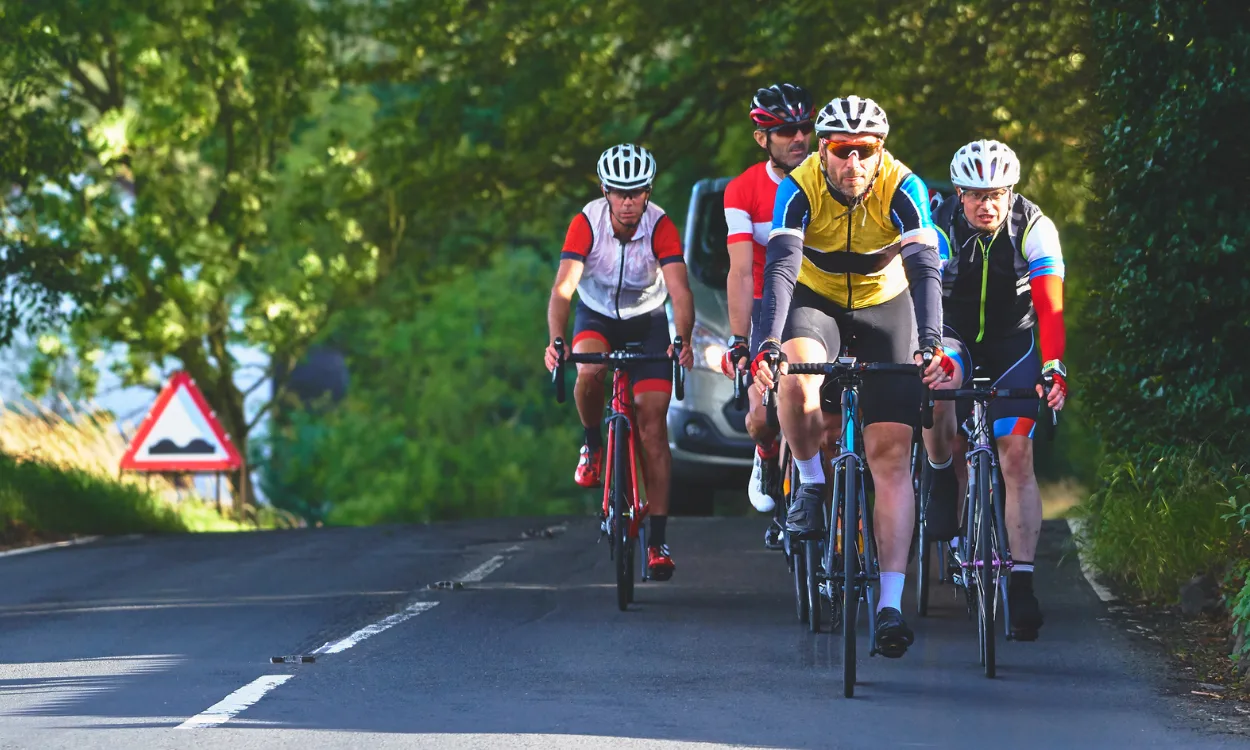

Sharing the road can be challenging, but with mutual respect and understanding, drivers and cyclists can coexist safely. Concentration, Observation, Anticipation, Space & Time (COAST) are five essential elements of any safe driving strategy. By introducing your drivers to this framework, you stand to give your fleet a valuable boost in safety.
Here are some essential tips and legal guidelines to share with your drivers, helping to make our roads safer for everyone.
For drivers:
- Respect minimum passing distance: The Highway Code advises drivers to give cyclists at least 1.5 metres of space (about the width of a compact car) when overtaking at speeds of up to 30mph, with larger gaps at higher speeds. This distance ensures cyclists have enough room to manoeuvre safely and helps prevent accidents.
- Be patient and aware: Cyclists may need to avoid obstacles like potholes or drains. Be patient and wait for a safe opportunity to overtake. Always check your mirrors and blind spots for cyclists before changing lanes, turning, or opening your car door. Clearly signal your intentions early to give cyclists time to react.
- Avoid harsh braking: Sudden stops can be dangerous for cyclists, especially if they are riding close behind your vehicle.
- Dutch reach: The Dutch reach is a simple yet effective car door opening technique designed to prevent “dooring” accidents, where cyclists are hit by car doors. By using the hand furthest from the door to open it, drivers and passengers are forced to turn their bodies, naturally prompting them to check for approaching cyclists or pedestrians.
- Road classification system: In a significant move to bolster road safety, the UK Highway Code has introduced a new Hierarchy of Road Users. This initiative prioritizes the most vulnerable individuals, placing pedestrians, cyclists, and horse riders at the top of the hierarchy. The new ranking system acknowledges the heightened risk these groups face in collisions, aiming to reduce accidents and improve overall safety on the roads.
- Two by two: Cyclists in the UK are allowed to ride two abreast. This practice can enhance safety, especially in larger groups or when accompanying children or less experienced riders
For cyclists:
- Stay visible: Wear bright or reflective clothing and use lights on your bike, especially in low-light conditions. Make eye contact with drivers where possible to ensure you are seen.
- Follow the rules of the road: Obey traffic signals and signs, just like any other vehicle. This includes stopping at red lights and giving way where required.
- Use cycle lanes: Where available, use designated cycle lanes. They are designed to offer a safer space for cycling.
- Signal your intentions: Use hand signals to indicate turns or lane changes. This helps drivers understand your movements.
- Ride predictably: Avoid weaving between vehicles or changing lanes suddenly. Maintain a steady line and speed.
Shared Responsibilities:
- Stay alert: Both drivers and cyclists should avoid distractions. Keep your focus on the road and your surroundings. Distracted drivers swerve from lane to lane, drive too close to the car or cyclist in front or react too slowly. As well as being a danger to other road users, this can bring you to the attention of the police who can issue a ticket at the roadside for careless driving.
- Be courteous: A friendly wave or a nod can go a long way in fostering goodwill and understanding on the road.
- Understand each other’s needs: Cycling has a valuable part to play in the transport and leisure system and cyclists should be treated with extra care and consideration. By driving patiently and respectfully, you help keep everyone safe and make roads more pleasant for all users.
To give your drivers a comprehensive guide on defensive driving, consider our popular learning sessions for people who drive for work, Toolbox Talks. The talk, ‘Defensive Driving’, explains the system for applying Concentration, Observation, Anticipation, Space & Time (COAST) in everyday driving scenarios, providing drivers with a useful and memorable technique to add to their skill set. For more information, please get in touch.


